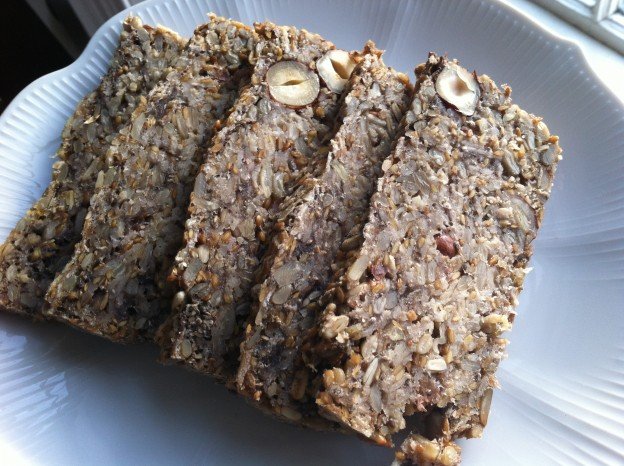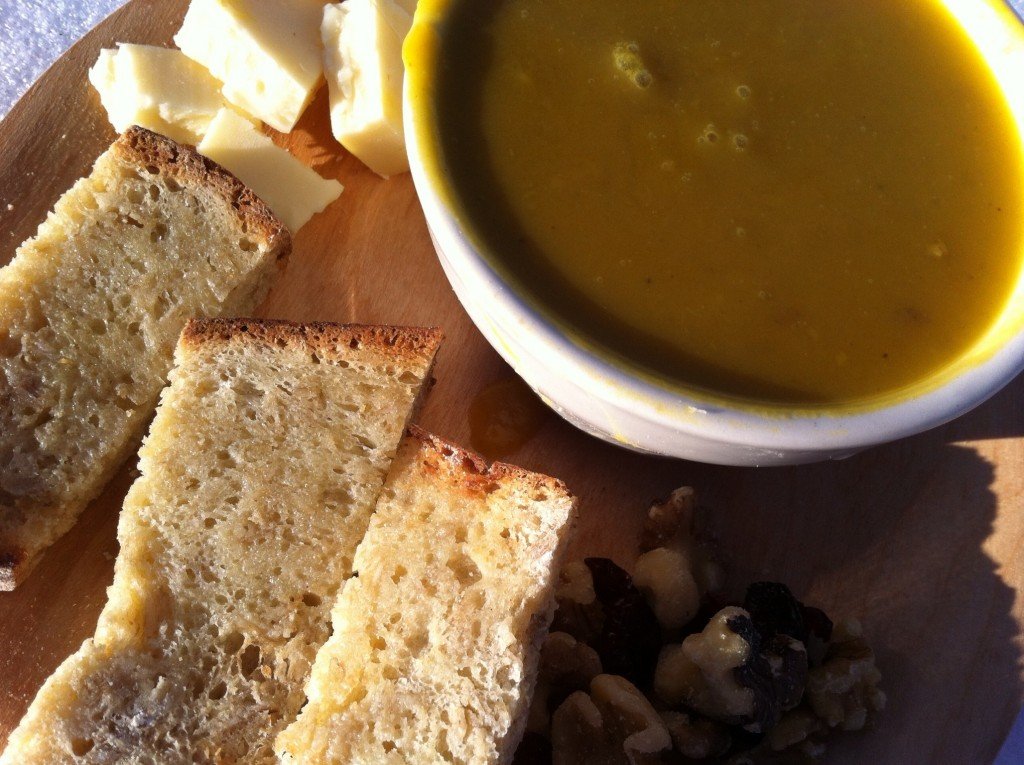
Not just for tea time. These trail mix-y scones can go the distance.
Scones. They sound so proper, so fancy, so….much of a pain to make. I used to think scones were too labor intensive to consider for every day food. That was until early one morning I was confronted with the task of making something get-out-of-bed worthy and take-on-the-road worthy within an hour. Scones saved my butt.
Here’s why: They call for cold butter vs softened; they involve no eggs and therefore no separate mixing vessels; they require only one baking sheet vs muffin tins that must be greased or lined with the ever-elusive muffin liners. Scones vs muffins? No contest! And that’s before the short cuts.
I know the sermon—baking is a science, weigh vs measure, be exact, blah blah, blah. But in the real world short cuts are important. Sometimes knowing they are there, whether or not you use them, gives you the mojo you need to embark on creating something delicious. That is why I am including my own short cut version along with the legit directions.
There’s nothing really trail-like about these scones, other than the fact that I made them as I was leaving on a long hike and wanted to bring something that was sturdy enough to travel but more enticing than trail mix. I needed a way to use up some cream and incorporate the chocolate chips and nuts that were just begging for the proper vehicle. Knowing that I could use a food processor, dump the whole shebang on a baking sheet and form the scones right on that same sheet made them a possibility. Out of this scenario, the Hit the Trail Scone, and it’s slightly healthier cousin, the Almond Joy scone, were born.
“Are they ok?” I asked my son who shies away from my more adventurous creations, particularly those involving nuts. “They’re ridiculous!” he said. “Don’t put them on the blog—keep them secret!” But you know how I feel about secret recipes, so here they are.
Please customize them to make them all yours!
Ingredients
2 cups (10 oz) all-purpose flour
1/4 cup (1 3/4 oz) granulated sugar
2 1/2 tsp baking powder
1/4 tsp salt
1 stick butter (4 oz) (cold, cut into pieces)
1 cup (8 oz) heavy cream (cold)
*1/2 – 3/4 c miniature chocolate chips (depending on preference)
*½ cup roasted almonds, coarsely chopped
* any combo of dried fruits, nuts and/or chips will work, so use what you love or what you have on hand. Think dried cranberries and walnuts, dried figs and almonds, white chocolate and macadamia nuts, butterscotch chips and walnuts for Ron Burgundy fans, peanut butter chips and crumbled bacon for Elvis fans, etc.
Topping
1 egg, lightly beaten (or more of that cream you need to use up)
2 Tbsp sanding sugar, granulated sugar or coconut sugar.
Official Method
Preheat over to 425 degrees
Mix together dry ingredients. Cut in butter with pastry blender, two knives or your fingers.
Add chopped nuts, chocolate and cream to ingredients in the bowl and blend together quickly with a spatula. Do not overmix.
Turn dough on floured board and pat into a big square or round, 1-inch or so thick. Cut dough into shapes of roughly equal size. Move pieces to parchment or Silpat lined baking sheet.
Bake as directed below.
Short Cut Method

The short-cut method begs for artistic license.
Mix together dry ingredients in bowl of food processor. Add butter to processor and pulse until the butter is in smallish bits. Do not over process! (Butter bits give scones their flakiness. Without the bits, scones become not very excellent muffins.) Pour contents of food processor into a large bowl. Add nuts and chocolate chips to food processor and pulse several times until they are broken into bite-friendly bits.
Pour chocolate chips and almonds into bowl with other ingredients and stir until just mixed. Add cream and blend together quickly. Do not overmix.
Roughly divide dough into two equal mounds. Plop each mound onto it’s own side of one baking sheet and shape each into a round or square. Do not over handle the dough (body heat and scones do not mix! See above butter bits intel).
Score each circle deeply into 8 wedges (or cut all the way through and move pieces slightly apart to allow them to cook more quickly. If you go with the square, score or cut it into similarly sized shapes of your choice.
Baking for both methods
Brush with egg wash or with cream. Sprinkle with sugar, or coconut sugar if you want to take this tropical theme seriously.
Bake for 14-16 minutes (or more depending on size) until golden brown.
Almond Joy Scones
Make as above but substitute well-mixed, full-fat coconut milk for cream, and if you’re a real coconut freak like me mix in ½ cup toasted, unsweetened coconut flakes with the chocolate chips and almonds. These take a few minutes longer to bake.
Bring it
These grab and go babies travel well in the car, in a pack, in a picnic basket, on a boat or to any gathering anywhere.













